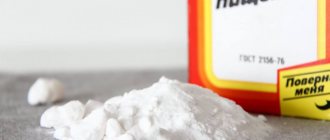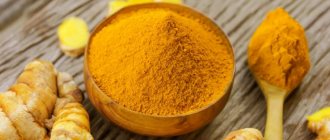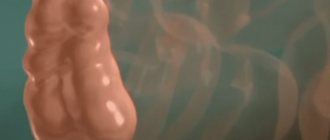When Hercules dragged the three-headed Cerberus out of the kingdom of Hades, poisonous saliva poured from the monster’s mouth. Where it touched the ground, powerful shoots grew, topped with large blue flowers. This is how ancient Greek mythology tells about the origin of one of the most poisonous plants in the northern hemisphere - aconite. This article will tell you about the chemical composition and properties of aconite, its distribution in nature, as well as its use in medicine and horticulture.
Aconite photo
Akonite – a multifaceted traveler with “intercontinental registration”
Wrestler tall
Aconite or tall fighter is a perennial meadow plant with more than 300 species, of which the most common are Aconitum napellus, Aconitum exelsum, Aconitum Songoricum. In domestic folk medicine, aconite is known as Issyk-Kul root, blue buttercup, Dzungarian aconite, wolfbane, skullcap, etc. On the Eurasian continent, the plant is found in the south of Siberia and Altai, in the north of Central Asia, in Primorye. In addition, representatives of the genus Aconite are native to North America.
Bright blue, blue, purple (rarely white, yellow or variegated) 8-petaled flowers of the plant, shaped like a helmet, are collected in beautiful inflorescences. However, this beauty is deadly: flowers, leaves, seeds, and (especially!) nodule rhizomes of certain species of aconite are very poisonous, mainly during the flowering period.
The chemicals produced by aconites - alkaloids - include aconitines - the strongest plant poisons, due to which plant tubers emit a characteristic odor reminiscent of horseradish or celery. It is aconitines that are the main active ingredients in aconite tincture, used in informal and homeopathic medicine for the treatment of cancer and a number of other diseases.
Attention! Aconite poisons penetrate the skin easily and quickly enough!
Therefore, if you are going to harvest the plant yourself, stock up on strong rubber gloves, a mask and be very careful.
The content of aconitine in the cell sap of plants can vary significantly, which is reflected both in the anti-cancer and other medicinal properties, and in the degree of harm that “blue buttercup” can cause to humans if used incorrectly.
The toxicity of aconite depends not only on its type, but also on the place of growth, age, soil, climatic conditions, etc. Aconite is most poisonous (and most effective in treating cancer) in southern latitudes, while in the north the poison content in the plant is so low that in some countries (for example, Norway) it is fed to animals.
Different types of aconite differ from each other not only in the color of the flowers, but also in the type of stem (erect, twisting, climbing), as well as its length (from 50 cm for erect ones to 400 cm for climbing ones).
Another feature by which representatives of this genus can differ from each other is the shape of the leaves on long petioles. They are finger-separate, dissected or lobed. The color of the leaves on the upper glossy side is dark green, on the lower matte side it is lighter.
The plant blooms from July to September, after which the elegant clusters of inflorescences turn into multi-seeded leaflets (up to 3-5 in each fruit). Aconite seeds - gray-black or brown, triangular, with a jagged or arched edge - are very small and light: there can be up to 450 of them in 1 g.
The rhizomes penetrate underground to a distance of 5 to 30 cm. It is here that the main “poison storage” of aconite – the tubers – are formed. Young tubers are small in size, over time they increase in size and in a mature state reach from 4 to 8 cm in length and 2-3 in width. There are usually 2-3 such “bumps” on the roots. Stems with inflorescences grow from mature tubers in spring. After the stem dies in the fall, a characteristic scar remains on the tuber. Every year, aconite moves several centimeters underground due to the growth of rhizomes and the formation of new tubers, while old tubers that have completed their “fertile mission” die off. Thus, the plant slowly “travels” across the meadow, gradually changing its “location”.
Botanical description
Flower growers classify aconite as a member of the Buttercup family. The plant is an erect, bush-shaped plant. In its natural environment, the height of the plant can reach three meters. The flower has a large, developed rhizome, with developed thin brown cords. Up to 15 roots appear on one plant at once, thanks to which the bush grows quickly and is quite unpretentious. This structure of the roots helps to keep the bush firmly on the ground in an erect form.
Among the people, the plant has a large number of names - fighter, wolf root, black potion, slipper.
Thick, light green stems emerge from the base of the rhizome in spring. The stem is dense, narrowed towards the apex. Dense petioles with shoots and leaves extend across the entire surface of the stem. The leaf blade of aconite is palmate. The leaves are large, which gives the plant additional decorativeness. The foliage on the plant is arranged alternately. The leaf blade is dark green, flat, and reaches 15 cm in diameter. Cuts on the foliage give the shrub an unusual appearance.
The plant blooms in large inflorescences. Flowering begins in July; the flowers remain on the plant almost until frost. The decorative nature of the flowers lies in their irregular shape. Various varieties may bloom with white, blue or yellow buds, but most bloom with purple buds. The flowering of aconite strongly resembles the inflorescences of lupines - the flowers are located at the top of the shoots, collected in several pieces.
After flowering, seed boxes are formed in place of the buds. The seeds ripen by mid-autumn. The seeds are quite small, brown or black in color.
Young plants are poisonous, but as they grow, aconite loses its poisoning ability, since the chemical element is removed from the foliage and stems.
Symptoms of aconite alkaloid poisoning
The picture of aconitine poisoning is determined by its multidirectional destructive effect. All vital systems are affected by the poison: nervous, cardiovascular, respiratory, excretory. The deadly alkaloid disrupts metabolic processes and immune defense mechanisms.
Do not under any circumstances try to taste the aconite tuber! The first signs of the harmful effects of aconitine - vomiting, goosebumps and numbness of the tongue - appear immediately. Following this, the classic picture of poisoning with curare-like poisons develops. For a fatal outcome, it is enough to swallow just 1 gram of a plant tuber!
The effect of aconitine on the heart and blood vessels
The muscles of the heart and blood vessels react to critical doses of poison with a drop in tone, as a result of which a person’s blood pressure sharply decreases. The reaction of the conduction system of the heart in the initial stage of poisoning is manifested by a slowdown in its rhythm - bradycardia. As the process progresses, the picture changes: bradycardia is replaced by increased heart rate - tachycardia. Following this, in the absence of emergency assistance, fibrillation occurs - chaotic contractions of the heart.
Other manifestations of poisoning
Cardiovascular disorders in aconite poisoning are accompanied by thirst, nausea and vomiting, impaired sensitivity of the lips, cheeks, tongue and fingertips, dry mouth, and temperature fluctuations.
A high degree of intoxication is manifested by twitching of the muscles of the face, arms and legs, periodic deterioration of vision, and difficulty breathing. This is followed by loss of consciousness, cessation of breathing and heartbeat.
Can poison be medicine?
The chilling details of the harmful effects of aconitine cause understandable fears among people who are faced with a serious health problem and are seeking to find an effective method of treatment with alternative methods.
Is it really possible to use aconite as a medicine, obtaining a powerful effect where official medicine is powerless? Yes, and also without fatal changes in the body?
Pests
- Aphid. An insect that often carries illnesses. To protect your aconite from such a pest, spray the plant with an insecticide. Read the instructions for use on the drug label.
- Rapeseed flower beetle. Such a parasite can be eliminated at the initial stage of its development. Therefore, we advise you not to forget to loosen the soil.
- Nematodes. They are like a group of special agents. Almost invisible, but they affect the plant for several days. If you find such pests, protect yourself with fungicides.
Aconite tincture and official anti-cancer drugs: similarities and differences
Aconite tincture
To begin with, it is necessary to recall that all chemotherapy drugs used in standard cancer treatment regimens are aggressive substances with a huge number of side effects.
Thus, official antitumor agents, like the alcoholic extract of aconite alkaloids, have a detrimental effect not only on cancer cells, but also on healthy organs and tissues. This also applies to the latest generation of chemotherapy drugs, which work quite selectively.
However, the effect of official medications in the vast majority of cases can be planned and controlled.
As for the tincture of aconite, the use of this poison, even in homeopathic doses, is associated with a high risk, since in order to obtain a lasting therapeutic effect, the drug must be taken for a long time, gradually increasing the dose to the so-called saturation threshold, which can vary significantly in different patients.
Therefore, the tall wrestler is not included in the WHO-approved treatment regimens for cancer, as well as other serious diseases.
However, homeopathic remedies based on aconite tincture are officially approved for use in China and India, as well as in Bulgaria.
It is worth adding that the healing properties of the plant have been known since ancient times. Moreover, in the not so distant past, professional oncologists successfully used aconite in the complex treatment of cancer tumors.
Spreading
It grows naturally in the center of Europe and northern Asia. A prerequisite for the existence of aconite is a large amount of fertile soil, so most often the flower grows in meadows and highlands and along rivers. Certain varieties of aconite grow in North America.
In Russia, aconite is an ornamental plant that is grown only under cultivation conditions. However, the flower grows quickly, so if not properly cared for it can go wild. Wild plants in Russia are found on the sites of old houses, abandoned areas and along roads.
History of the use of aconite in medical practice
The first official notes on the healing properties of aconite in homeopathic doses appeared in the mid-19th century. One of them was published in an English medical publication called The Lancet. The article contained a large number of examples of miraculous healings under the influence of “useful poison”, on the basis of which the homeopathic remedy was, in fact, elevated to the rank of a “panacea”.
The creator of the famous “Explanatory Dictionary” and a doctor in one of the professions, Vladimir Dal, treated aconite with great reverence. In 1838, his letter to Prince Odoevsky described a real case of a patient being cured of a severe form of pneumonia under the influence of a homeopathic medicine based on this amazing plant. This letter was subsequently published in the progressive publication of those times - the Sovremennik magazine. By the way, Dahl treated his son, who was ill with lobar pneumonia, with tincture of aconite in homeopathic doses.
Professional oncologists in various countries of the world quite actively used aconite in the practice of treating tumor diseases in the last century, when official chemotherapy drugs were not much different from aconitine in their destructive effect on the body and were significantly inferior to the “healing poison” in effectiveness.
For example, in the Soviet Union, practicing oncologist surgeon T.V. Zakaurtseva. developed a technique that she used in her medical practice for more than 20 years. The doctor prescribed courses of aconite tincture for cancer patients in the preoperative period, as a result of which it was possible to achieve localization of the tumor (disappearance of metastases) even in the late stages of the disease. After treatment with aconite, the lesion was completely removed.
In the postoperative period, Zakaurtseva again prescribed the patient a course of treatment with an extract from the Issyk-Kul root. This made it possible to prevent the occurrence of new metastases: a common complication after operations to remove malignant tumors.
Detection and identification of plants of hazard class I.
The best "detection" is to stay as far away from wild plants of the Apiaceae family as possible.
Stick to it yourself and teach your children to do the same from childhood. People who like to use wild plants for food should be especially careful. For example, young rosemary and chervil are extremely similar to hemlock. In spring, plants are very difficult to distinguish. The leaves of sedum and hemlock are so similar that, when placed side by side, they are almost completely indistinguishable! A slight difference is noticeable only in the bases of the leaves - in the marigold they are grooved and slightly pubescent, while in the hemlock they are smooth. The petioles of the hemlock are also smooth, while those of the kupir have a deep groove on top. But I repeat, it is very difficult to distinguish the leaves, even for a professional. In summer, hemlock is more visible due to its bare, slightly furrowed stem with crimson spots, shiny and covered with a waxy coating. A characteristic distinguishing feature is that the plant “smells like mice” in the sun due to the “emanations” of the alkaloid coniine. A very dangerous plant that “mimics wild food” is hemlock. But it is given away by a root with transverse partitions and yellow oily drops of juice released when the root is cut. In general, wild Umbrellas are very similar to each other. They can easily be confused with cumin, parsley, coriander, carrots, celery, anise (the seeds are often confused with hemlock seeds). The best option for lovers of wild food is to read my article, look for potentially edible plants, exclude the possibility of coming across “hazard class I plants” and write down the GPS coordinates of the place. And only next spring we go to a proven plot for greenery.
Life hack with seeds. As you can see in the photo, chervil, rosemary, hemlock and hemlock are quite easy to distinguish by their fruits, but when it comes to collecting spring greens in the forest, I advise you to be extremely careful with these plants - even more careful than with mushrooms. In theory, it is possible to identify plants in the summer, when the fruits are unripe (you can roughly imagine what they will look like when ripe). For comparison, see the picture below.
Important! Be sure to wear gloves when handling seeds and green plants!
Reminder for recognizing poisonous seeds - clickable
Versatile capabilities of aconite
Unlike modern official oncology, which has opted for synthetic antitumor drugs of targeted action, traditional medicine to this day successfully uses aconite tincture for the treatment of cancer tumors - both auxiliary and primary.
In addition, the high wrestler is used in treatment regimens for a number of diseases that are difficult to treat with traditional medications.
The range of indications for taking aconite is extremely wide: this amazing drug has no analogues among herbal preparations in terms of effectiveness and multidirectional therapeutic effects.
An alcoholic extract of a mixture of plant alkaloids can be used externally and/or internally, and gives a good effect for lesions of the skin, bones and joints, blood vessels, nerves, muscle tissue and mucous membranes of various nature, location and gravity.
In addition to the tincture, short-term wraps with fresh leaves of the plant can be used for local treatment of old deep suppurations.
Treatment of diseases of the skin, mucous membranes and hair
- External use of aconite tincture gives positive results in the treatment of neuroallergic diseases with pronounced skin manifestations: psoriasis, neurodermatitis, erysipelas.
- Treatment with aconite tincture has a quick and complete effect on scabies and lice.
- The positive results of the complex use of plant alkaloids in the treatment of cancer of the skin and mucous membranes, including melanoma, are described.
Therapy of infectious diseases
Aconite has been used for a long time to treat diseases of an infectious nature, including especially dangerous ones - anthrax, leprosy - as well as venereological diseases prone to relapse. To obtain a lasting effect in these cases, homeopaths prescribe taking aconite tincture orally in combination with local treatment of foci of infection on the skin.
The effect of aconite on allergies, poisoning by berries and mushrooms, bites of poisonous snakes and insects
fly agaric
One of the most amazing features of the extract of aconite alkaloids is the ability to act as an antidote for poisoning with strong poisons of a similar structure.
In this case, the therapeutic effect is due to the binding of aconitine to blood cells and/or other human tissues, preventing their interaction with deadly substances.
Aconite alkaloids ideally “suit” their chemical formula to the structure of cell receptors. Therefore, the receptors interact specifically with aconite alkaloids, and not with more dangerous poisons.
Using tincture for injuries and diseases of bones and joints
Wraps with aconite tincture help with bruises, dislocations and fractures, arthritis and polyarthritis, gout and osteochondrosis, radiculitis, and various forms of bone cancer.
Application of aconite in neurology and psychiatry
Homeopathic treatment with tincture of Djungarian aconite is highly effective in the complex treatment of diseases caused by disturbances in the functioning of various parts of the nervous system.
In psychiatric and psychotherapeutic practice, the wrestler is successfully used for convulsions and epilepsy, schizophrenia and other mental illnesses, neuroses and psychopathy, and impotence.
In neurology, aconite is used in the treatment of neuralgia and neuritis, migraines and dizziness, Parkinson's disease, paralysis, beriberi disease, etc.
Treatment of inflammatory and allergic respiratory diseases
Aconite is effective for sluggish and advanced pneumonia, pleurisy and bronchitis, pulmonary tuberculosis, bronchial asthma, tonsillitis and acute respiratory infections.
Use in the treatment of diseases of the digestive system
Taking the tincture orally helps with gastritis, stomach and duodenal ulcers, constipation and flatulence, hepatitis and cholelithiasis, intestinal colic, and worms.
Therapeutic effect of extract from aconite tubers on the cardiovascular system
The relaxing effect of aconitine on the walls of arterial vessels allows its tincture to be successfully used in the complex treatment of angina pectoris and hypertension.
Other diseases for which aconite helps
Aconite tincture is used for:
- anemia,
- hearing and vision impairments,
- senile decline of strength,
- problems with the thyroid gland (goiter),
- diabetes mellitus,
- baldness,
- uterine fibroids and persistent uterine bleeding of other nature,
- hydrocele and cystitis (as a diuretic and anti-inflammatory),
- prostate adenoma,
- kidney stone disease, etc.
Important information! For oral administration, aconite is prescribed in microdoses, according to special regimens and with mandatory constant monitoring of well-being. The dose and timing of treatment are most often selected individually. The occurrence of pronounced side effects and complications serves as a signal to immediately stop taking aconite; the question of further treatment should be decided only after professional medical consultation and occur under the supervision of a doctor. However, given the ambiguous attitude of official world medicine towards a highly toxic poison, treatment with aconite under the official supervision of a doctor is very often difficult or impossible.
Intro
This story began quite a long time ago, with the fact that my patron (iSlon, hello!), commenting on the article Skoropishch or How to feed yourself in exceptional conditions, reasonably remarked that:
To the description of each of the plants, I would briefly attach what is similar to them and what can become the last food in life...
I then (in the spring) agreed that it was important not only to popularize the use of wild plants for food, but also to warn people that powerful plant phytotoxins were lurking very close by.
That is, in fact, everyone who is interested in wild plants of the Umbelliferae family - chervil, gooseberry, kupir - is in danger of a fatal mistake. Quite a lot of time has passed since then. It's the middle of summer. City residents migrate en masse to forests, fields and reservoirs. And the main dangers that can await an inexperienced “user” there are mites with Borrelia/Rickettsia inside, or incredible (even on a global scale) plant toxins. I wrote everything I could from the heart about ticks and counteraction to them (see in the telegram channel, starting with this note and below), and now it’s time to take on the plants.
Unlike plant bloggers, preppers and other outdoor enthusiasts, I will not focus on conventionally (IMHO) toxic plants, i.e. those that cause minor, albeit requiring long-term treatment, diseases (see, for example, my article about hogweed phototoxins). Today we are talking about the most powerful thing in our forests, for which there are no antidotes/treatments and which is almost guaranteed to lead to painful death even with short-term contact with the skin. If we draw an analogy with chemical substances and their hazard classes, then, for example, raven's eye (which many are very afraid of for some reason) or hellebore are hazard class II (“don’t eat and nothing will happen”), since their poisons belong to the class saponins (see Notes of a phytochemist. Potatoes. Part three. “Fugu bulb” or SOLANINE). But what I will talk about next are plants that contain fast-acting neurotoxins. Therefore, I solemnly assign them danger class I (the highest, because “you can die if you accidentally touch them”).
In general, several dozen poisonous plant species grow on the territory of our country (Belarus/Ukraine/Russia). The most dangerous ones are from the Umbelliferae family. Among them are the same mentioned poisonous wech (another name is hemlock), speckled hemlock, corysh (dog parsley) and hemlock. Further about each of them.
Treatment of cancer patients: advantages and possibilities of aconite
The centuries-old practice of using aconite tincture and/or decoction in treatment regimens for cancer patients indicates its high effectiveness and allows it to be considered a full-fledged alternative to chemotherapy drugs, including the latest generation of drugs.
The main advantages of homeopathic therapy based on high-wrestler alkaloids:
- prevention of the formation of metastases, as well as a significant slowdown (and in some cases, reverse development) of existing secondary tumor foci;
- competent use of aconite practically does not lead to the occurrence of irreversible processes in internal organs;
- Strict adherence to the dosage minimizes the side effects of aconitine.
- Aconite not only counteracts the progression of the tumor, but also significantly reduces, and in some cases leads to the disappearance of, almost all the main symptoms of cancer: pain, depression, intoxication, etc., which is especially valuable in the treatment of older people, as well as cancer patients weakened by illness or long courses of official chemotherapy.
Historical excursion
The history of the genus name is not known for certain. There are at least two possible origins: from a word meaning “cliff” or “rock” in Greek, and from a word that translates as “arrow”. And there is also a mythical explanation for the name: while performing his next feat, Hercules brought the three-headed dog Cerberus out of Hades, and he, breaking free, splashed everything around with his poisonous saliva; in those places where the drops fell to the ground, tall and thoroughly poisonous plants quickly rose, which were called aconites, since everything happened near the city of Akoni. And aconite was called a fighter in accordance with Scandinavian legend: it allegedly grew up in the place where Thor, who fought the poisonous reptile, died from its bites.
Methods and treatment regimens for aconite in alternative oncology
In oncological practice, a 10% alcohol extract from the tubers or leaves of turnip or red aconite is usually used. Due to the high toxicity of these plant species, it is better to dose the drug with an insulin syringe (U-40 scale). The contents of such a syringe are 1 ml or 40 drops of a strictly defined volume. It is not recommended to dose the medicine using an eye dropper: the volume of drops from it is unstable, and this can lead to both an overdose of toxins (up to double) and a decrease in the effectiveness of the tincture.
Usually the tincture is taken on an empty stomach, half an hour before meals, or 2-3 hours after meals. The standard treatment regimen involves a gradual increase in the daily dose. Treatment begins with 1 drop 3 times a day, daily increasing the number of drops by 1 at each dose. On the 20th day, the dosage reaches a maximum of 60 drops per day. After this, the number of drops begins to be reduced in the same order. Thus, the standard treatment cycle with aconite takes 39 days.
However, taking into account the different individual tolerance to the action of the poison, as well as focusing on the general condition of the patient and the level of functioning of his vital organs and systems, the treatment regimen with aconite very often has to be adapted to the individual characteristics of each patient, as well as to the characteristics of a specific tincture.
Before use, any number of drops are dissolved in boiled water, cooled to room temperature (50–60 ml or a quarter glass).
Attention! Tinctures from slightly poisonous species of aconite with a low content of alkaloids (for example, Chekanovsky's aconite) are dosed not in drops, but in milliliters.
In the absence of pronounced side effects and a sharp aggravation of the condition during treatment, it is recommended to take three courses of taking aconite tincture with a 2-week break after the first and second. When a lasting positive effect is achieved, treatment with aconite is completely stopped. In case of incomplete cure or relapse of the disease, it is possible to continue therapy, the duration and frequency of which are determined individually.
The importance of an initial individual approach to taking aconite tincture is clearly shown by the following example. When using a tincture from the roots of aconite Djungarian, the content of toxic alkaloids in 1 ml is 0.08%, the potency of the drug is very high. If there are decompensated disorders of the internal organs due to the underlying disease and/or previous treatment with other anticancer drugs, it is not recommended to take more than 30 drops of tincture daily (10 drops per dose). Thus, in this case, the course of treatment will be only 19 days when taken according to the standard regimen.
It should be noted that “killer” doses of alkaloids are not always necessary. For example, in the treatment of certain forms of cancer, as well as in the early stages of the disease, oncophytotherapists give preference to tinctures of medium concentration (2.5-5%) with a more gentle effect and the ability to increase the dose as smoothly as possible. This approach allows us to count on lower risks for the patient.
It seems even more correct to carefully analyze the patient’s condition for oversaturation of the body with aconite alkaloids, which is manifested by the symptoms of poisoning described above. The dose increase stops when the first signs of oversaturation appear, after which its uniform reduction begins.
Important! When drawing up individual plans for treatment with aconite according to this scheme, it is very important to strictly adhere to the timing of breaks between courses of one stage of treatment.
It is necessary to rest from the effects of aconitine for as many days as there are drops in the maximum single dose of the medicine. So, for example, if the first signs of oversaturation were identified on the 17th day of treatment (i.e., when taking 17 drops of tincture 3 times a day), then the second course of therapy should be started not after 2 weeks, but after 17 days.
The main advantage of the standard dosage regimen is the ability to use aconite tincture independently without mandatory medical supervision. The main disadvantage of standard dosages is the high risk of developing pathological changes (including the occurrence of irreversible disorders) in vital organs.
Attention! In most cases, the drug is started according to the standard regimen. The transition to gentle methods occurs when undesirable effects occur - this happens quite often: the body of a cancer patient is weakened. The most important condition for the effectiveness of treatment, regardless of the technique used, is its continuity. Remember: in the absence of life-threatening changes in the functioning of the organs and systems of the body, there should be no intervals between taking the tincture - only the dosage can change.
The duration of the break between stages of treatment (if necessary) is determined based on the patient’s condition, diagnosis, rate of disease progression and other objective reasons, and ranges from three months to one year.
A good effect in the treatment of cancer patients is achieved by alternating treatment with aconite tincture with herbal medicine with other medicinal plants with similar properties: tinctures of hemlock, fly agaric, and milestone.
Reproduction
Aconite easily reproduces and grows. If approached incorrectly, bushes quickly fill the space. In order to get new young bushes at home, the plant is propagated in two ways - by dividing the bush or using seeds.
Dividing the bush
Dividing a bush is a method of propagation, which is carried out not only to create a new bush, but also to preserve the decorative appearance of aconite. Reproduction in this way is carried out in spring or autumn, after the bush blooms. Adult aconites are chosen for reproduction.
After digging the fighter out of the soil, part of the bush is separated along with the roots in such a way that half of the roots and shoots are separated into both halves. The detached bush is planted in a previously prepared hole. The hole is prepared in the same order as for transplantation. After digging in the soil and compacting the soil, the plants are watered and mulched abundantly.
In the case where aconite has a tuberous rhizome, the wrestler can also be propagated by dividing the tuberous rhizome. This method is only possible when several adventitious tubers have formed on the plant. After which the sprouted tubers are disconnected from the main one and planted in a permanent habitat.
When planting tubers, make sure that the sprouted sprout is above the surface of the ground, since if it is in a dark place, the sprout may begin to rot.
Cuttings
You can also divide aconite by germinating cuttings. For this purpose, young shoots are used, which easily take root. Before separating the cutting from the bush, it is important to check the presence of buds on the shoot. The length of the petiole must be at least 20 cm.
Cuttings of the fighter are carried out at the end of spring, at the moment of formation of young branches. To do this, cuttings are cut from the branch with a sharp knife. The cut site on the mother plant and cuttings is treated with natural charcoal. After processing, the cuttings are planted in moist soil and greenhouse conditions are created.
Under optimal conditions, the cuttings quickly produce roots. After new leaves appear on the plant, the greenhouse is removed, and aconite is planted in a permanent habitat.
Seed propagation
Propagation by seeds is carried out in the fall, when the fruits on the plant ripen. To do this, ripe seed pods are cut off and immediately sown in an open substrate. During winter, the seeds undergo natural stratification, and in the spring they germinate beneficially and begin to bloom. If seeds are planted in spring, aconite will begin to grow only after a season
When planting aconite seeds, create small holes about a centimeter deep. After sowing, the soil layer is covered with a thick layer of organic fertilizer until spring. In spring, with the advent of constant warmth, seedlings appear.
Sequence of actions when signs of poisoning with tincture of aconite appear
Severe poisoning with tincture of aconite causes dangerous disruptions in the functioning of vital organs and serves as a signal for urgent action to prevent irreversible changes in the body, including death.
In such a situation, it is recommended to immediately stop taking the drug and carry out desintoxication (drip infusions of saline and glucose solution, if necessary, together with an antidote/antidote). In this case, the treatment effect is nullified, but in this case there is simply no other way out.
During treatment strictly according to the regimen, signs of intoxication may also appear, as mentioned above. However, if these signs are noticed in time and the treatment regimen is adjusted, it will not have to be interrupted. Thus, the patient will still have the chance to take advantage of the destructive effect of the drug on tumor cells without significant harm to his health.
The first signs of poison overload include:
- general weakness,
- nausea,
- loss of sensitivity and tingling on the tips of the fingers and tongue,
- disruptions in the functioning of the heart (disturbances in the normal rhythm of heart contractions).
If these symptoms appear, it is necessary to reduce the single dose of the drug by 3 drops and continue treatment with this dosage until the patient’s condition improves. In only 5% of patients such measures are ineffective. This group of people is advised to stop treatment and take a 2-week rest, after which it is necessary to start the course of therapy again, choosing the appropriate concentration, dosage and sequence of taking the tincture.
Important! If an allergy to the action of the poison occurs, further use of aconite tincture is completely contraindicated in any doses!
The effect of blue buttercup on the body
The combination of these substances affects the nervous system, breathing, and peripheral nerves, which can result in paralysis. The degree of toxicity will be equal to the content of alkaloids, the number of which is noticeably reduced after the preparation of raw materials for drugs. In its minimal doses, aconitine has a positive effect on tissue metabolism.
Read also: Espumisan baby: the occurrence of allergies and drug overdose
Aconite leads to increased heart rate and increased heart contractions, but an excessive dose can damage and even stop the ventricles.
If you nevertheless take aconite orally, then irritation of the oral mucosa is possible, which activates increased secretion of saliva due to the effect on the parasympathetic nerve. The negative effect makes itself felt only after the accumulation of a certain amount of alkaloids in the body, so if you took aconite for the first time, the effects will be very weak. Indications for use:
- cancerous tumors,
- alcoholism,
- alcohol poisoning,
- epilepsy,
- tuberculosis of open and closed form.
The plant has medicinal properties, which leads to the widespread use of this plant in the elimination of malignant tumors and other pathologies, if it is not possible to carry out procedures from specialists. Aconite and homeopathy are compatible, but don’t lose your head.
Using an aqueous decoction of aconite leaves and tubers: pros and cons
If necessary, an alcohol tincture of aconite can be replaced with an aqueous decoction of tubers or other parts of the plant.
Aconite decoction is usually taken orally 3 times a day, half an hour before meals, warmed, 60 ml per dose.
To obtain a therapeutic concentration of active ingredients, it is necessary to boil 3 medium-sized root vegetables in 1.5 liters of water over low heat for half an hour.
The advantage of this dosage form is the absence of the harmful effects of alcohol on the weakened body of a cancer patient.
Disadvantages of aconite decoction:
- impossibility of precise dosage,
- disruption of the structure of alkaloids during processing with a deterioration in their therapeutic effect.
Consequences
The results of the poisoning are very ambiguous. A lot depends on personal intolerance and the characteristics of the body. However, if a person does not die in the first 1-6 hours, then the possibility of full or partial restoration of health is extremely high. With incomplete recovery, partial or complete loss of vision, weakened hearing and loss of muscle tone are possible. Temporary problems with speech, long-term memory and coordination are also possible.
Read also: Sodium thiosulfate: instructions for use, analogues
Special cases of using aconite tincture for various cancer localizations
Treatment of skin cancer with an alcohol extract of aconite alkaloids can be carried out both locally and in combination: external treatment of the tumor (applications) + oral administration of the drug. In this case, one should take into account the rapid and complete absorption of aconitines through the skin (to avoid overdose and poisoning). A proper ratio, as well as a gradual increase in doses of aconite tincture to a state of saturation with combined external and internal use, ensures high efficiency in the treatment of skin forms of tumors, including extremely malignant ones (melanoma, etc.)
Tumors of the lower intestines - rectum and colon - are treated with aconite by taking the tincture per os (by mouth) and in the form of enemas. Instead of enemas, suppositories or ointments with aconitine can also be used, which provides a more lasting, smooth and complete therapeutic effect. The high effectiveness of ointments and suppositories is explained by the slow and uniform absorption of alkaloids through the rectal mucosa, as well as their selective delivery directly to the site. As a result, the drug acts for a long time without serious side effects. The only disadvantage of ointments and suppositories is the impossibility of accurately adjusting the dose.
Emergency first aid
Examples from the practice of traditional healers
Patient S. diagnosed with stage IV pancreatic cancer
Surgical treatment was refused due to the presence of tumor metastases in the liver and colon, as well as the spread of its foci throughout the omentum and mesentery of the small intestine. By the time the treatment with aconite began, the patient complained of general weakness due to intoxication with tumor decay products, he had a picture of liver failure, and a pronounced decrease was noted. In addition, the patient complained of severe girdling pain in the hypochondrium. The officially received symptomatic treatment consisted of pain-relieving injections of narcotic drugs twice a day every 12 hours. Therapy with aconite followed a standard method, the drug was taken orally. Already at the end of the first course, the patient was able to refuse one injection of anesthetic, and in the middle of the second course the need for pain relief completely disappeared. After completing all 3 cycles of treatment with aconite, the patient did not seek help for 10 months due to the absence of any signs of disease progression. However, then the pain reappeared, and the patient’s wife came to the traditional healer for a new tincture.
Patient V. diagnosed with stage IV breast cancer with metastases in the liver and bladder
received supportive treatment - removal of accumulated fluid from the abdominal cavity using laparocentesis every one and a half to two weeks. The patient noted severe pain in the right hypochondrium and complained of scanty and infrequent urination. After the next removal of ascites fluid, the patient’s condition sharply worsened, she stopped getting up and practically could not talk. After two weeks of treatment with aconite tincture in a standard concentration according to the usual regimen, the patient’s condition improved significantly, muscle tone increased, intoxication symptoms disappeared, and her mood improved. The patient returned to her normal lifestyle, including walking in the fresh air. Currently, treatment with aconite continues.
Patient D. after radical surgery for sarcoma of the lower jaw with removal of a section of it
I was bothered by constant pain in the problem area. The patient was in a state of depression due to the underlying disease, as well as the presence of a pronounced cosmetic defect of the face. An alcohol extract for the tall wrestler was prescribed according to the standard regimen, and the treatment was tolerated without complications. Carrying out 3 standard cycles led to the disappearance of pain, improvement in general condition, and the cessation of pain relief. Other positive effects include significant weight gain after a course of aconite therapy (+10 kg). The patient went to work, despite the fact that cosmetic surgeons did not consider it possible to perform reconstructive cosmetic surgery on the lower jaw at this point in time. At the present time (8 months after the end of the first course of treatment), a decision is made to conduct repeated therapy with wrestler tincture
Patient F. with rectal cancer in stage III
surgery was refused due to an unfavorable prognosis. The patient was bothered by the periodic urge to defecate, feces were practically not retained, and blood was constantly present in the stool. In addition, he noted general weakness (in the absence of pain). Treatment with aconite tincture was carried out according to a standard regimen in combination with rectal suppositories based on pork fat. The full course of therapy led to a decrease in the severity of the symptoms of the disease, bleeding from the intestines is observed sporadically and easily stops, positive dynamics in mood, weight, and general well-being are noted.
Patient V. with operated testicular cancer
asked for help with complaints of severe aching pain in the groin area. At the time of treatment, the inguinal lymph nodes were enlarged and painful on palpation. In addition, the patient noted problems with sleep and lack of appetite, and rapid weight loss (8 kg in the last 6 weeks). Treatment was carried out with alcohol tincture of aconite according to the standard regimen. On the 17th day, signs of oversaturation with toxic alkaloids were noted - nausea and vomiting. The therapy adjustment consisted of reducing the single dose by 3 drops and freezing it for 3 days. The dose plateau led to the disappearance of nausea and vomiting, after which the drug was resumed as usual. After the end of the first cycle, the disappearance of pain was noted along with a decrease in lymph nodes, restoration of normal sleep and appetite, and a tendency to gain weight.
Patient I. diagnosed with stage IV thyroid cancer with metastases to the bones of the lower extremities
asked for help with complaints of severe pain in the hip area, as well as along the femur and tibia bones of both legs. The patient was prescribed aconite tincture according to the standard regimen in combination with rubbing and applications at the site of pain. The patient was treated independently, and after a year and a half she asked for a tincture for a second course.
Chemical composition
All parts of the plant contain alkaloids related to aconitic acid, the main of which is aconitine. When heated with water, acetic acid is split off and the less toxic benzoilaconine is formed. With further hydrolysis, benzoic acid is split off to form even less toxic horse meat. Tubers contain 0.18-4% of the total alkaloids of the aconitine group: aconitine, mesoaconitine, hypoaconitine, gstaaconitine, sasaaconitine, benzoilaconitine. Other alkaloids found: neopelline, napelline, sparteine, traces of ephedrine.
In addition to alkaloids, daucosterol was obtained from alkaloid tubers, as well as a significant amount of sugar (9%), mesoinosidol (0.05%), transaconitinic acid, benzoic, fumaric, and citric acids. The presence of myristic acid has been established. palmitic, stearic, oleic and linoleic acids. Tubers also contain flavones, saponins, resins, starch, and coumarins (0.3%).
The leaves and stems, in addition to the alkaloid aconitine, contain inositol, tannins, ascorbic acid, flavonoids, trace elements (over 20 types) and other biologically active compounds. The chemical composition of aconite is still poorly understood. The grass and leaves of aconite contain alkaloids and vitamin C.









